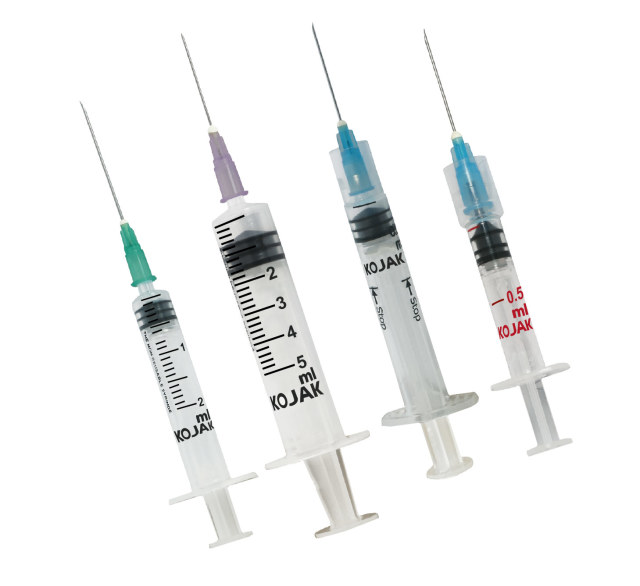Sectors in the syringe and needle market include disposable and safety syringes, injection pens, needleless injectors, insulin pumps, and specialty needles. Hypodermic syringes are used with hypodermic needles to inject liquid or gases into body tissues, or to remove from the body. Injecting of air into a blood vessel is hazardous, as it may cause an air embolism; preventing embolisms by removing air from the syringe is one of the reasons for the familiar image of holding a hypodermic syringe pointing upward, tapping it, and expelling a small amount of liquid before an injection into the bloodstream.
The barrel of a syringe is made of plastic or glass, usually has graduated marks indicating the volume of fluid in the syringe, and is nearly always transparent. Glass syringes may be sterilized in an autoclave. However, most modern medical syringes are plastic with a rubber piston, because this type seals much better between the piston and the barrel and because they are cheap enough to dispose of after being used only once, reducing the risk of spreading blood-borne diseases. Reuse of needles and syringes has caused spread of diseases, especially HIV and hepatitis, among intravenous drug users. Syringes are also commonly reused by diabetics, as they can go through several in a day with multiple daily insulin injections, which becomes an affordability issue for many. Even though the syringe and needle are only used by a single person, this practice is still unsafe as it can introduce bacteria from the skin into the bloodstream and cause serious and sometimes lethal infections. In medical settings, single-use needles and syringes effectively reduce the risk of cross-contamination.
Medical syringes are sometimes used without a needle for orally administering liquid medicines to young children or animals, or milk to small young animals, because the dose can be measured accurately and it is easier to squirt the medicine into the subject's mouth instead of coaxing the subject to drink out of a measuring spoon.
Syringes come with a number of designs for the area in which the blade locks to the syringe body. Perhaps the most well known of these is the Luer lock, which simply twists the two together. Bodies featuring a small, plain connection are known as slip tips and are useful for when the syringe is being connected to something not featuring a screw lock mechanism.

